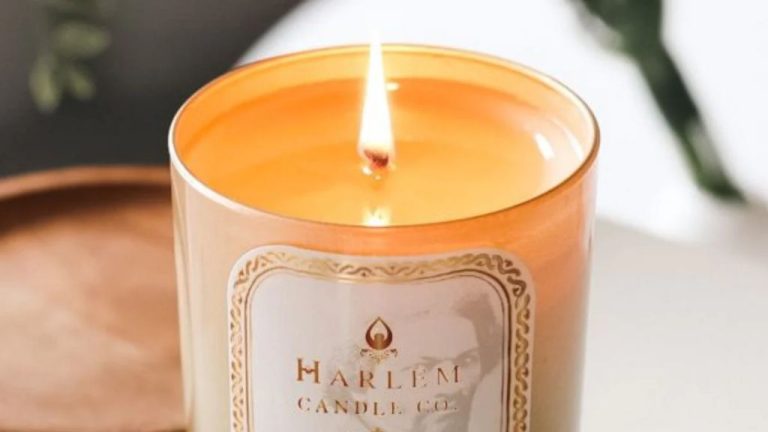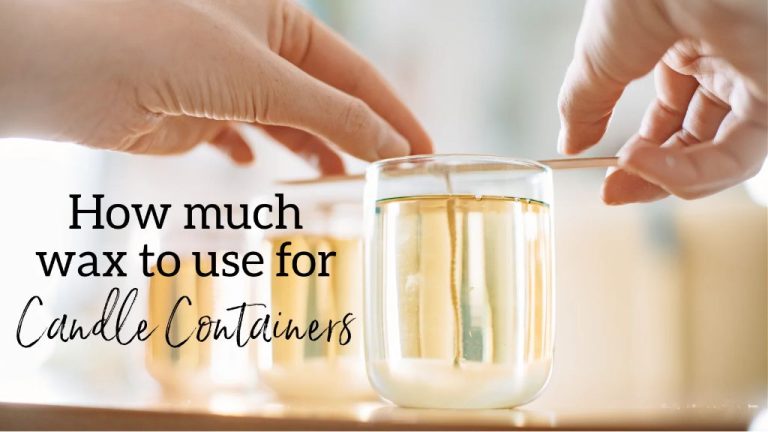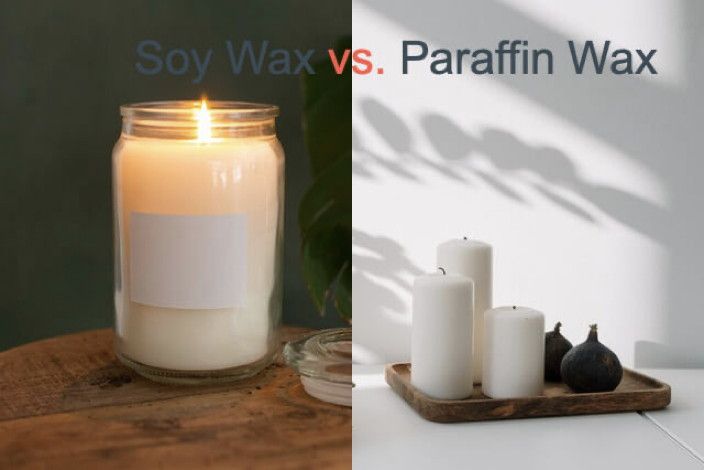What Do You Put In A Wick Diffuser?
A wick diffuser is a type of essential oil diffuser that uses a wick and reed system to disperse essential oils into the air. It works by soaking up essential oils from a reservoir using a rattan or bamboo reed, then dispersing the aroma as the oil evaporates from the wick.
Wick diffusers provide a gentle, steady diffusion of essential oils compared to ultrasonic or nebulizing diffusers which produce more of a fine mist. The diffusion coverage of wick diffusers is also more concentrated and localized, making them ideal for smaller spaces like bedrooms, offices, and bathrooms.
Some key benefits of wick diffusers include:
- Simple, quiet operation
- No heat, water or electricity required
- Compact and portable design
- Lower risk of over-diffusing oils
- Can provide ambiance with flameless candle-like designs
- Cost effective and eco-friendly
Wick diffusers allow you to easily enjoy the aromatic benefits of essential oils without any complicated setup or risk of overheating the oils.
Choosing the Right Oil
When choosing which essential oils to use in your wick diffuser, you’ll want to consider the fragrance, therapeutic benefits, and safety of each oil. Many popular oils used in diffusers include:
- Lavender – calming, aids sleep
- Lemon – uplifting, improves mood
- Peppermint – invigorating, improves focus
- Eucalyptus – clearing, promotes airway health
- Tea tree – cleansing, promotes healthy skin
- Chamomile – soothing, reduces stress
- Rosemary – energizing, boosts mental clarity
- Bergamot – relaxing, reduces anxiety
- Frankincense – grounding, spiritual
- Cedarwood – calming, improves mood
Be sure to only use 100% pure essential oils and avoid fragrance or perfume oils, which can contain synthetic ingredients. High-quality essential oils will provide the truest aroma and maximum benefits.
Diluting Essential Oils for Diffusers
Essential oils are extremely concentrated, so it’s important to dilute them before using in your diffuser. Without dilution, the undiluted oil can damage the diffuser or cause it to clog. Additionally, diffusing undiluted oils can be overwhelming or even irritating due to their strength.
The recommended dilution ratio is typically around 1-5% essential oil to water or diffuser liquid. This means 1-5 drops of essential oil per 100 drops of water/diffuser liquid. Some common dilution ratios include:
- 1% – 1 drop of essential oil per 100 drops of water/diffuser liquid
- 2% – 2 drops of essential oil per 100 drops of water/diffuser liquid
- 5% – 5 drops of essential oil per 100 drops of water/diffuser liquid
When mixing your oils, add the essential oil drops to the water/diffuser liquid first and mix well before adding to your diffuser. The dilution ratio can be adjusted based on your aroma preferences, just avoid using more than a 5-10% concentration.
Diffuser Blends
Blending different essential oils can create appealing new scents and enhance the benefits of aromatherapy. Here are some popular essential oil blends to try in your diffuser:
Stress Relief
Lavender, bergamot, and frankincense oils are calming and can help relieve anxiety and stress when diffused. The sweet, citrusy scent of bergamot balances the floral lavender nicely.
Energy Boost
Energizing essential oils like grapefruit, lemon, peppermint, and rosemary can help improve mood and concentration when inhaled. Combine two or more for an invigorating aromatherapy boost.
Respiratory Relief
Eucalyptus, tea tree, peppermint, and lemon oils can help clear sinuses and relieve coughs and colds. Diffusing them aromatherapeutically brings their therapeutic properties into the air.
Good Night’s Sleep
The relaxing, sleep-inducing properties of lavender, chamomile, and clary sage can help prepare your body and mind for rest. Enjoy this blend in the evening for better sleep.
Experiment with blending 2-4 complementary essential oils in your diffuser and take note of how they make you feel. Tailor your own Signature Scent for different occasions or moods.
Diffuser Maintenance
Proper maintenance is key to ensuring your diffuser lasts a long time and continues working well. Over time, essential oils and water can leave behind residue and mineral deposits that build up inside the diffuser. If left unchecked, this buildup can clog the device, impacting its misting performance.
To prevent buildup, thoroughly clean your diffuser every 2-4 weeks depending on your usage frequency. Refer to the manufacturer’s instructions for the recommended cleaning method, but generally a mild soap and water solution or vinegar water works well. Disassemble the device and use a soft brush or cloth to gently scrub and rinse away any oil or mineral residue.
Always make sure the diffuser is completely dry before adding new oil and water. Let it air dry fully upside down, or carefully dry with a towel. Running a diffuser with lingering moisture inside can damage the ultrasonic plate.
Proper care will help ensure your diffuser continues running optimally for a long time. But even with good maintenance, diffuser components can wear out over 1-2 years. Consider replacing ultrasonic diffusers after this timeframe to maintain performance.
Diffuser Placement
Placing your diffuser carefully in your home is important for both effectiveness and safety. Consider putting your diffuser in rooms where you spend the most time, like the bedroom, living room, or office. Popular spots include on the nightstand, coffee table, desk, or shelves. Avoid placing it directly on the floor or in a high-traffic area where it could get knocked over. Also be aware of furniture beneath that could get water damage if the diffuser leaks.
Be mindful of placing your diffuser too close to walls, fabrics, and household objects when in use. Oils can potentially stain or damage certain surfaces. It’s best to follow manufacturer instructions and keep the diffuser at least 12 inches away from other items. Don’t place near vents or heaters either, as the heat and airflow can disperse the oils faster than desired. Consider turning the diffuser off when leaving a room or not present. Taking precautions allows you to reap the aromatherapy benefits safely.
Usage Tips
When using a wick diffuser, it’s important to follow some basic usage tips to get the most out of your diffuser experience:
Diffuse oils for 30-60 minutes at a time. Diffusing for longer than 1-2 hours continuously can cause oversaturation. Give your senses a break in between diffusing sessions.
Aim for 2-3 diffusing sessions per day max. Overusing essential oils can cause nausea, headaches, and other side effects.
Pay attention to how you feel. If you start developing a headache or nausea, take a break from diffusing.
Consider your diffuser placement. Diffusing oils right next to your bed or workspace can cause oversaturation. Place your diffuser a few feet away in the same room instead.
Rotate your oils. Using the same 1-2 oils repeatedly can cause sensitivity. Vary your diffuser blends to prevent overexposure to any single oil.
Consider diffuser runtime. Run times of 1-4 hours are common. Make sure to account for runtime when scheduling diffusing sessions.
Take occasional diffuser breaks. If you find yourself diffusing daily, take a day or two off per week to reset.
Troubleshooting Common Diffuser Issues
All diffusers can run into problems occasionally. Here are some of the most common issues and how to resolve them:
Diffuser Won’t Turn On
If your diffuser isn’t turning on, first check that it is plugged in properly and the outlet is working. Try unplugging it, waiting 10 seconds, and plugging it back in. Also check that the power button or switch is working correctly. If it still won’t turn on, the internal electronics may have an issue.
Weak or No Mist Output
A clogged diffuser nozzle is usually the culprit if your diffuser isn’t producing much mist. Try cleaning the nozzle with a cotton swab dipped in rubbing alcohol. Make sure not to press too hard. You can also add a few drops of rubbing alcohol to the water reservoir to help break up oil buildup. If it’s still not working well, the ultrasonic chip may need to be replaced.
LED Lights Not Working
If the LED lights on your diffuser aren’t turning on, first check that the light function is actually turned on according to the diffuser settings. Try cycling through the different light modes. If they still don’t come on, the LED bulbs may have burnt out and need to be replaced.
When to Replace Your Diffuser
Diffusers typically last 1-2 years with regular use before needing replaced. Signs you may need a new diffuser include frequently clogged nozzles, very weak mist output even after cleaning, malfunctioning lights, unusual loud noises, and electronic issues. Consider getting a new unit if you’ve had yours for over 2 years and are running into lots of problems.
Alternative Diffuser Options
While wick diffusers are popular, there are other types of essential oil diffusers that may be worth considering:
Ultrasonic diffusers use ultrasonic vibrations and water to produce a cool mist. They don’t require heat, so they’re a good option for diffusing citrus and floral oils. Ultrasonic diffusers also cover larger spaces than wick diffusers.
Nebulizing diffusers blow air through a small tube to turn essential oils into a fine mist. They don’t use heat or water, making them ideal for more delicate oils. Nebulizers also diffuse oils efficiently in large spaces.
Compared to other diffuser types, wick diffusers are more affordable and compact in size. However, they have a smaller diffusion range than ultrasonic or nebulizing options. Wick diffusers also require more maintenance with regular wiping and wick changes.
Consider your space, oil preferences, and maintenance level when deciding between a wick or alternative diffuser for your needs.
Conclusion
Wick diffusers offer a convenient and effective way to disperse essential oils into the air and benefit from their soothing aromatherapy. To get the most out of your wick diffuser be sure to use pure, high quality essential oils and dilute them properly with the right carrier oils for diffusion. Pay attention to diffuser placement for maximum coverage and always maintain the unit properly by cleaning the diffuser and replacing the wick as needed. Follow usage and safety tips like keeping it out of direct sunlight and not leaving it on continuously for more than a few hours at a time. With proper care, your wick diffuser can provide a lifetime of tranquil aromatherapy.
By understanding the basics of oil dilution, wick maintenance, and safe diffuser practices you’ll be well equipped to use your wick diffuser safely and effectively. Properly used, it can enhance your home, mood, and wellbeing every day through the power of pure essential oils.






